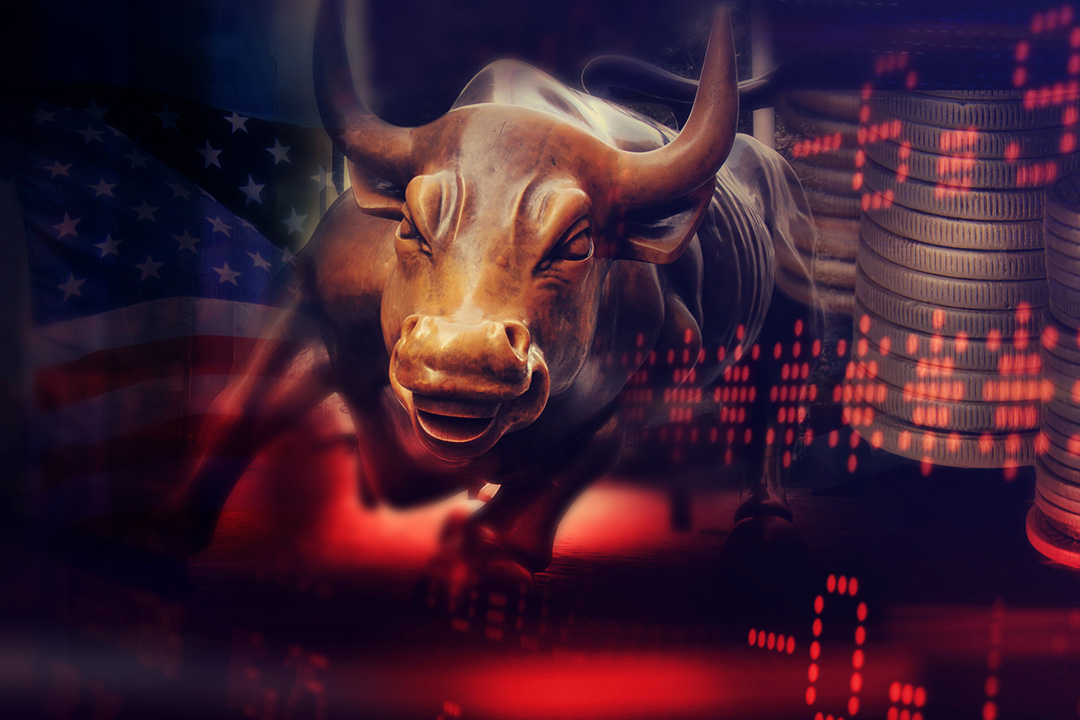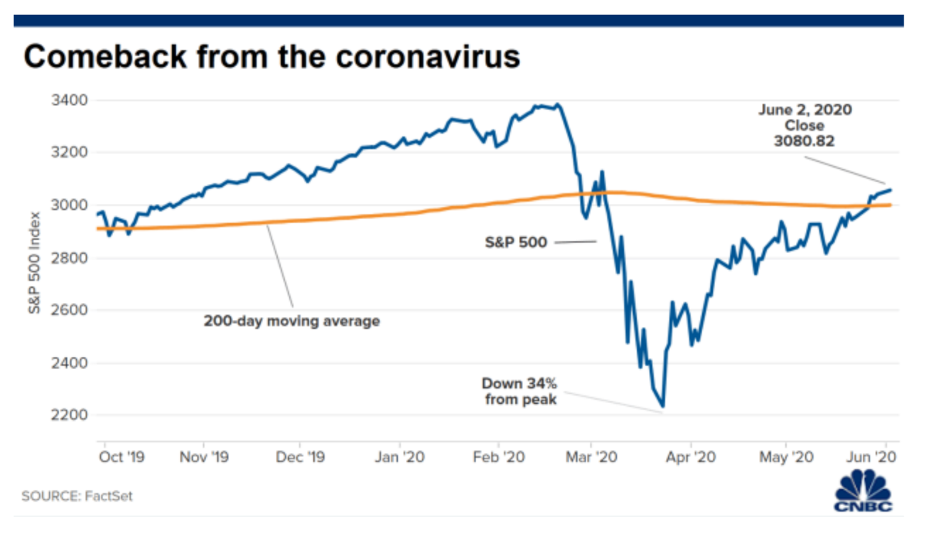

Have you recently seen the headline “the biggest bull market of all time”?
You won’t see this on the bearish ABC, or almost equally bearish Nine newspapers (the SMH and The Age), but this is what they should be screaming. This is the reality of stock markets over the last two months.
Try these quick facts. Since bottoming at the height of the Coronavirus panic on March 23, the Dow Jones is up by 41%. The more representative and broader US S&P 500 has added 40%, while the tech heavy NASDAQ 100 has put on an astonishing 45%. Despite the Coronavirus, the race riots and President Trump, the NASDAQ is actually positive for calendar 2020, returning 7.1%.
And try the chart below, which shows that the US S&P 500 index (blue line) has moved back above its 200-day moving average (brown line) which is a key indicator for chartists and technical analysts. It is back in bull market territory, resuming the long-term uptrend.

It is not a story that is confined to the USA, with stock markets in Canada, Germany, France, the UK, Japan and South Korea enjoying massive rallies. In Australia, our stock market has added 35% from its low on March 23 of 4402.5, with the S&P/ASX 200 closing yesterday at 5941.6.
Rather than the usual “billions wiped from the stock market”, the headline should be “billions unwiped from the stock market”. In fact, more than $400bn has been added to the value of the Aussie share market in a little over two months.
This will shortly be reflected in the superannuation balances of millions of ordinary Australians, as well as the SMSFs of self-funded retires and portfolios of share market investors. This is surely something worth screaming about!
But do not hold your breath waiting because, regrettably, “bad news sells”. Further, it doesn’t suit the political narrative of our public sector finance journalists.
Looking back at the last four months, which have seen a ferocious fall in the stock market in February/March followed by a super aggressive rally in April/ May, there are some important takeaways. Here are four key lessons:
Firstly, Warren Buffet’s famous adage “it is wise to be fearful when others are greedy and greedy when others are fearful” proved spot on. When “everyone” wanted to sell at the height of the panic, with the “world about to end”, that was the time to be “greedy”, back up the truck, and buy. Historically, market falls of 30% to 40% have always been followed by strong bounces.
Secondly, a “buy the dip” strategy can be successful. You need to patient, willing to accept that you can be wrong for a period of time (you will never buy at the bottom of the market or sell at the top of the market), and you need to maintain the faith that over the long term, asset prices (and stock markets) move higher.
Next, keep some cash on hand because it is awfully hard to invest in dips unless you can find the liquidity quickly.
And finally, don’t take too much notice of the anti-business, scary journalists and financial commentators on the ABC. You will never invest in anything if you allow yourself to be swayed by their analysis.
Where to from here? The $64 question.
I, like many others, am struggling to understand why stock markets are as high as they are. I get that there is just so much cash around (Central Banks across the globe are printing money like it is going out of fashion) and that it needs to find a home, governments are providing massive stimulus, and stock markets look ahead and believe that, just like every other pandemic, we will get through this. I also get that there are many fund managers who are bearish and perversely, the “path of least resistance” is higher.
But I am a little cold and cannot get excited to buy at these levels. I am waiting for the next dip. More confidently, this will not be as severe as the last one, will be keenly bought and long-term investors shouldn’t be losing any sleep about the stock market.